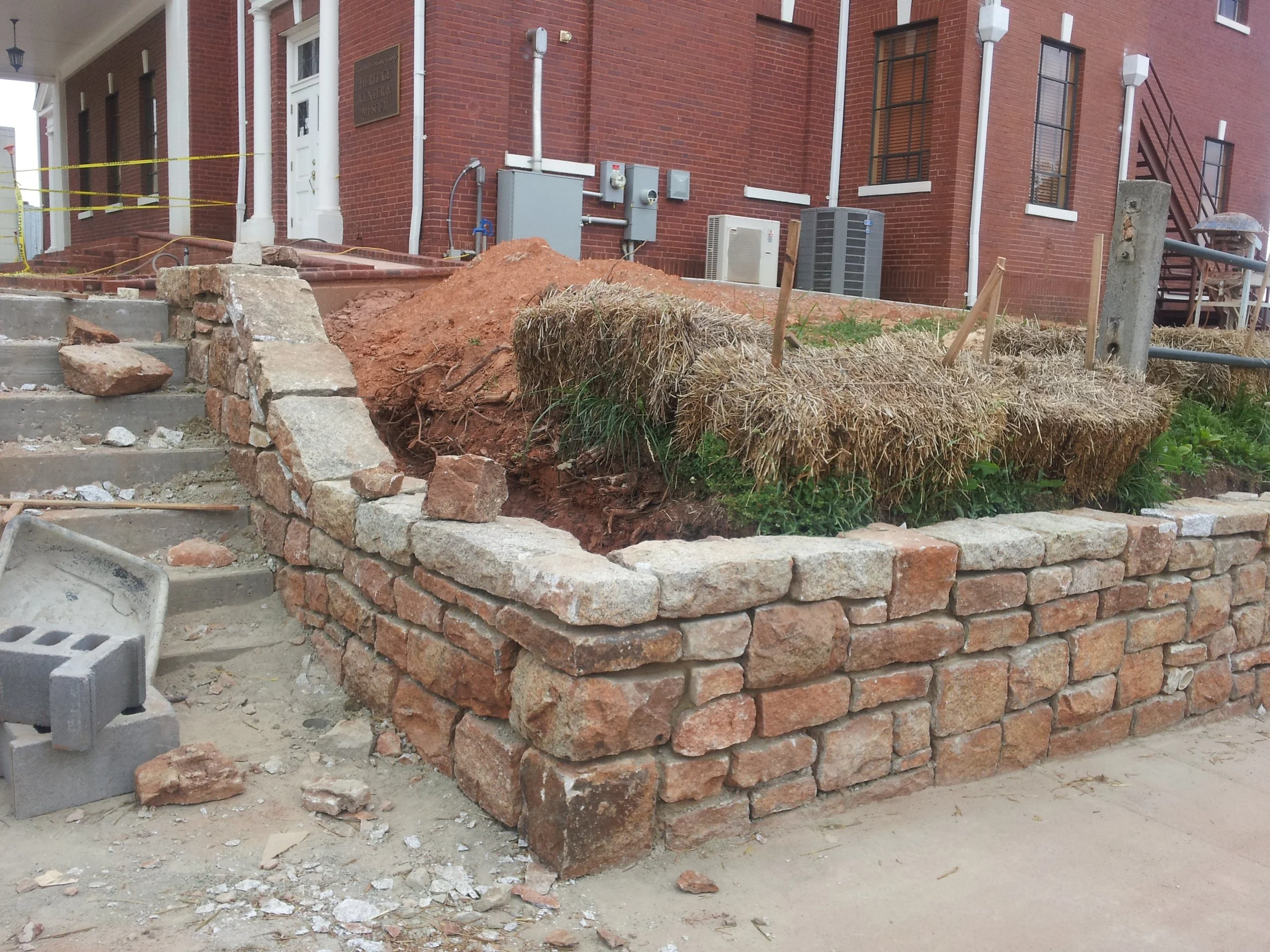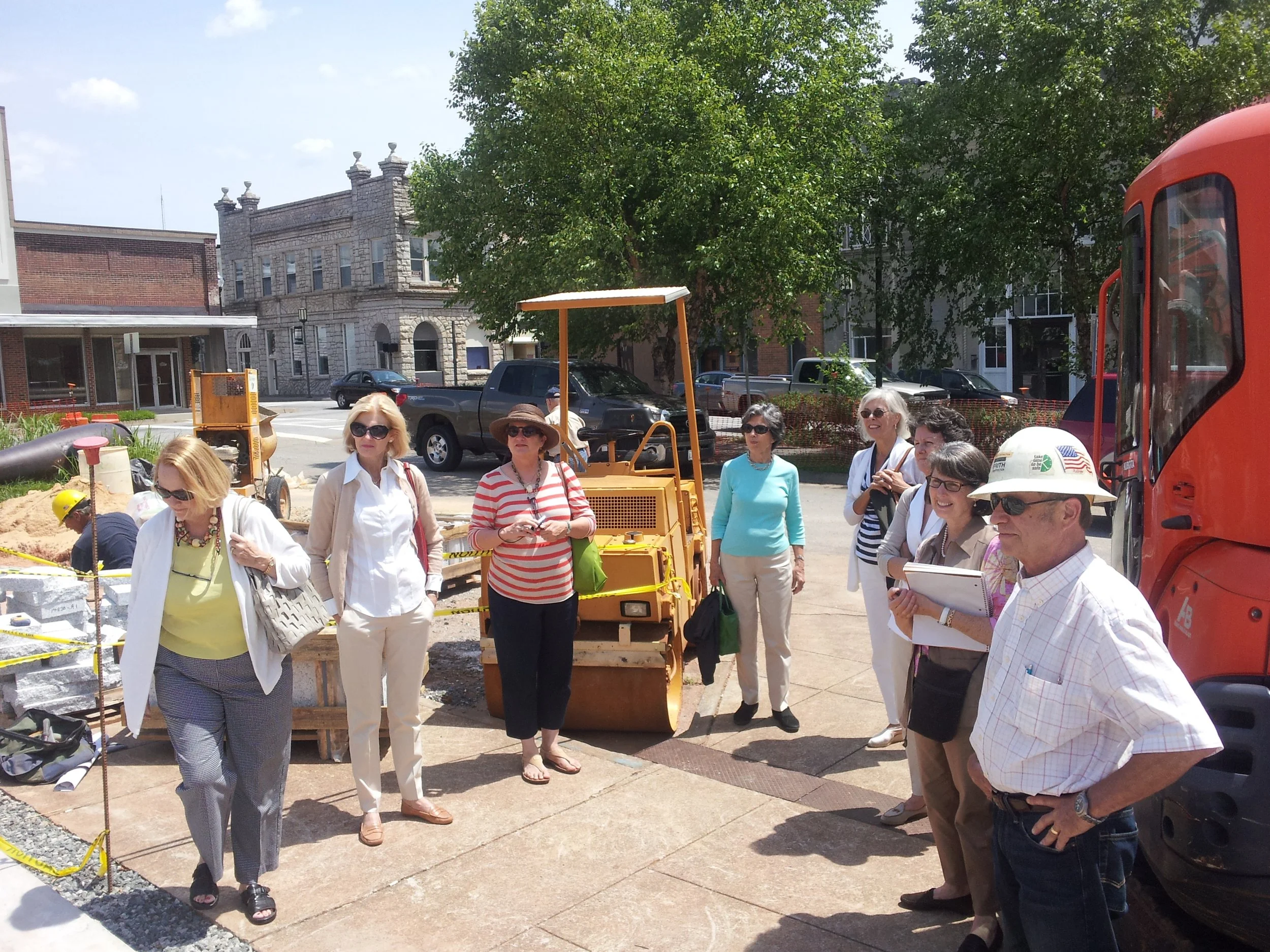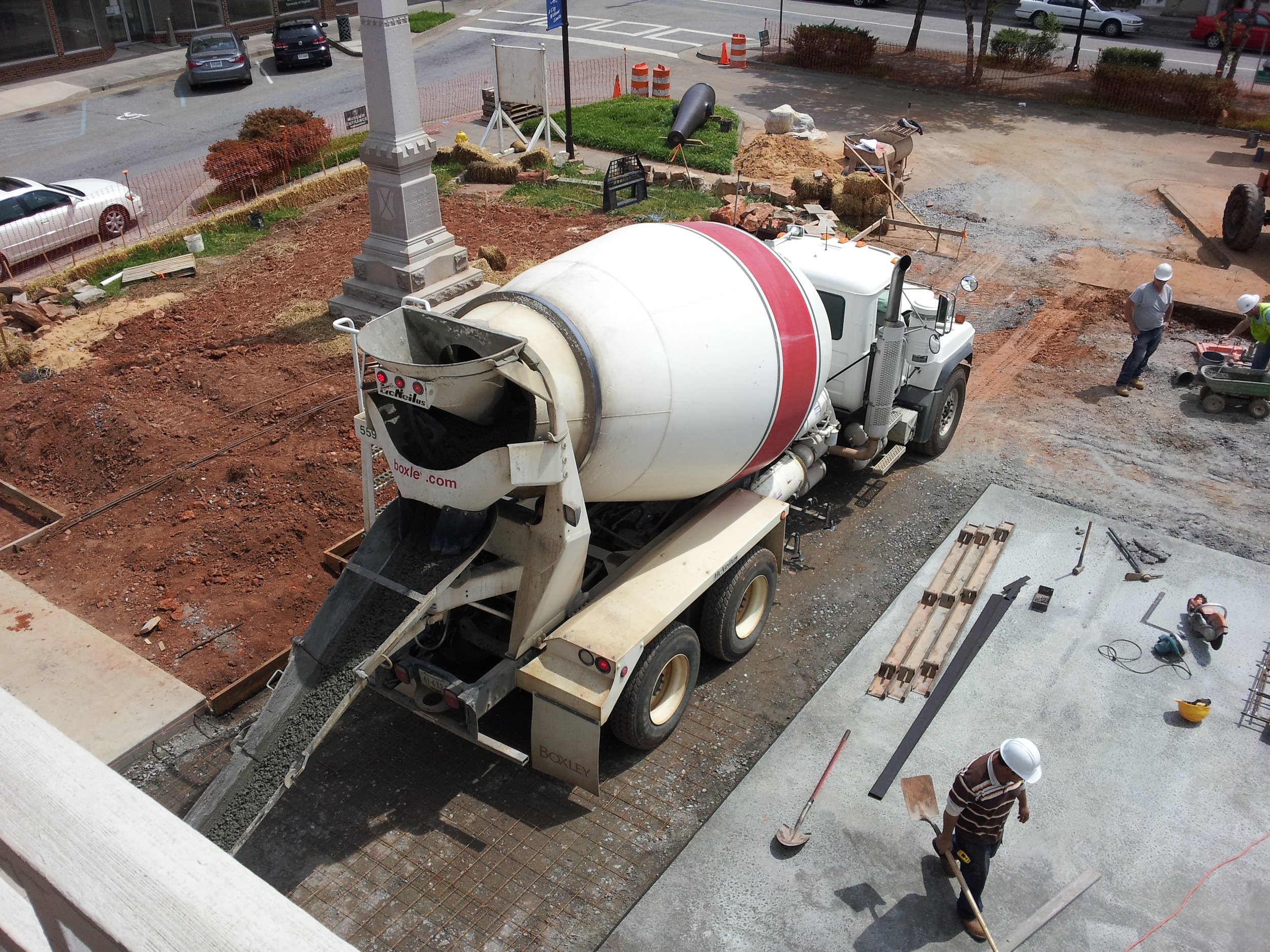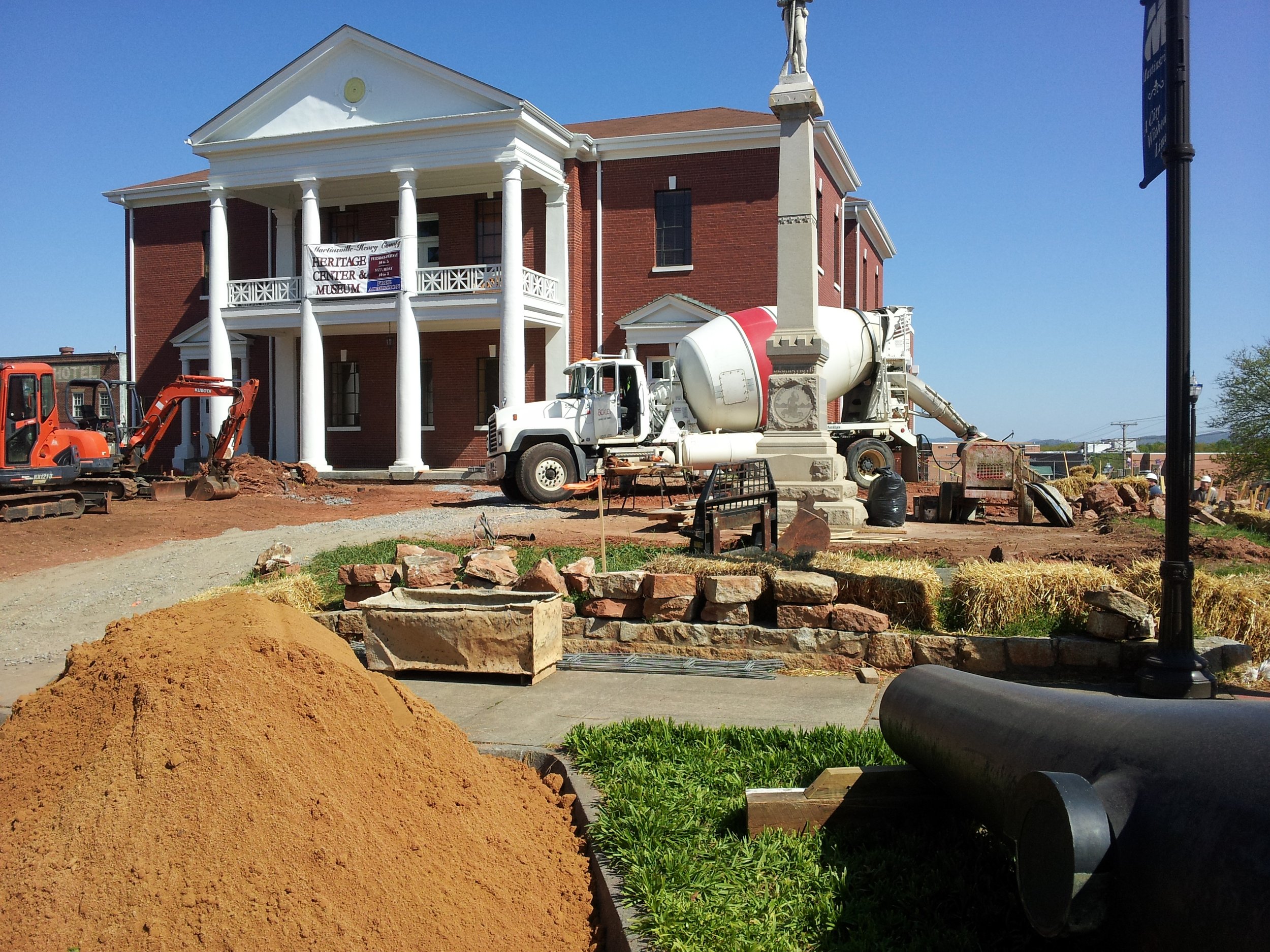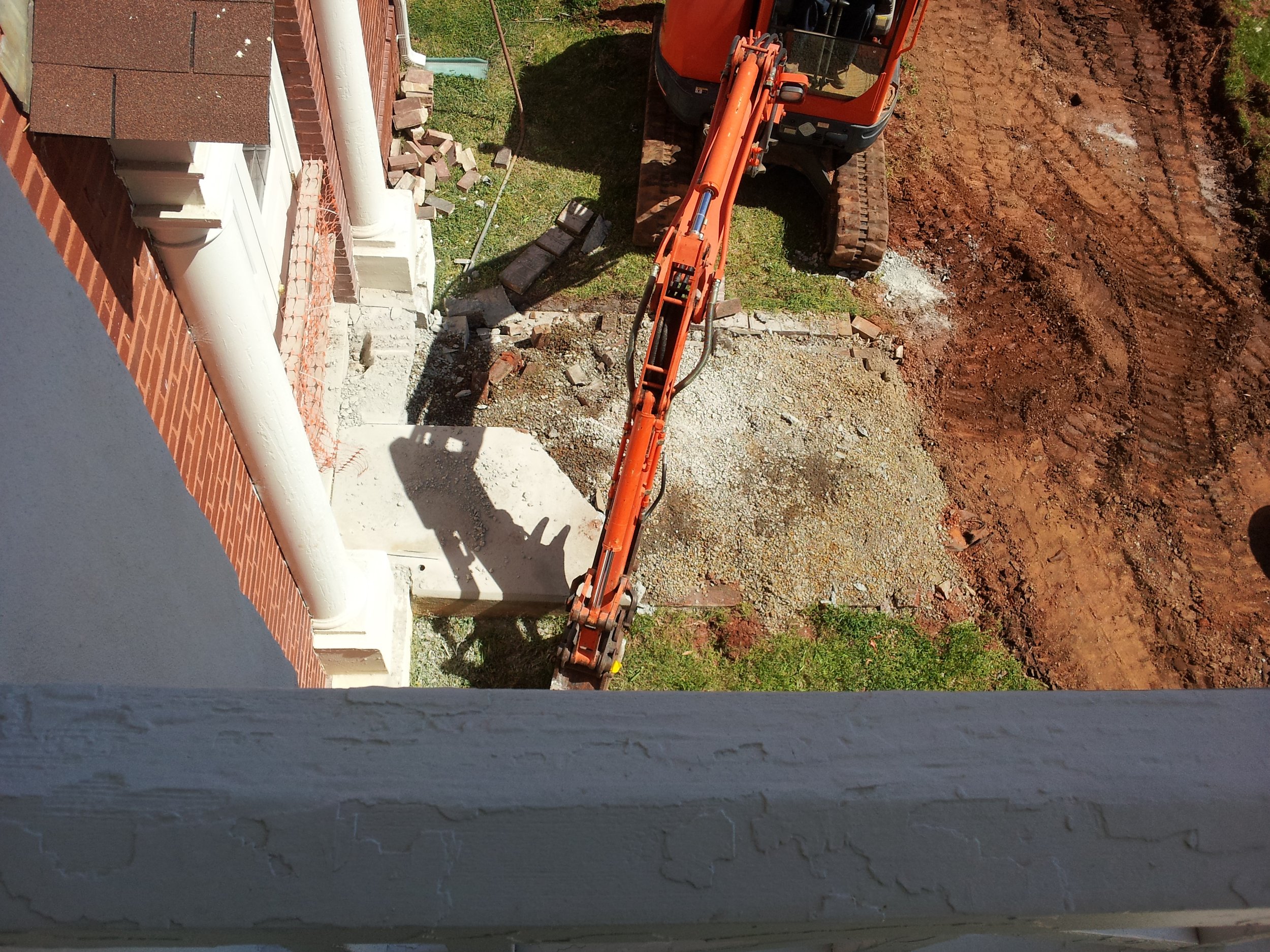
History of the Courthouse
Formation of Henry County - 1776
When Virginia was first settled in the 1600s, the population was sparse. As land became more densely populated, large counties were separated into smaller ones.
Henry County was finally formed from Pittsylvania County in 1776. The first Henry County courthouse was not located here, because Henry County was much larger. When it separated from Pittsylvania County in 1776, the center of the county was approximately 7 miles northwest of here, in what is now Stanleytown, because the law required that no citizen should have to travel more than a day to attend court.
The first Henry County Courthouse was built on land that became Edgewood or in Stanleytown (which used to be the center of the county). In 1777, the first court of Henry County got land from Henry Barksdale and decided to build a courthouse, which was finished in 1780. That courthouse served as a hospital during the American Revolution for Maj. Gen. Nathanael Greene’s men in May 1781. In 1792, the county courthouse was moved to the town of Martinsville. Courthouses were located based on the rule that no citizen should have to travel more than a day to attend court.
In 1787 the northern part of Henry County became Franklin County. Patrick County broke off in 1791. That made Martinsville the center of Henry County.
Henry County is the first county in Virginia not named after a British place or person. It was named after Patrick Henry, the patriot and Virginia’s first elected governor.
In 1779, Patrick Henry moved to a 10,000-acre plantation in Leatherwood. He moved back to Richmond in 1784, after being elected to his fourth one-year term as governor.
A historical marker reads: “This boulder marks the landed estate of Patrick Henry, where he lived from 1778 to 1784. Erected by the Patrick Henry Chapter Daughters of the American Revolution 1922”
Courthouse in Martinsville - 1824
Plantation owner George Hairston and James Anthony donated the land to build a new courthouse here.
The first building was constructed out of hewn logs but was torn down and replaced with a two-story brick building in 1824 – constructed with two wooden staircases on the outside leading to the courtroom on the second floor.
In 1906 the outside stairs were replaced with a single flight of iron steps at center front. The roof at that time did not extend over the portico.
Courthouse Expansion - 1929
In 1929 the courthouse was expanded by encasing the 1824 courthouse inside a larger building, keeping the original portico columns. The 1824 bricks can be seen in the central rooms of the first floor.
The roof was extended over the portico, and stairs to the courtroom were constructed inside. Four two-story wings were added to the building.
In 1901 the Confederate monument was purchased and installed by the local chapter of the United Daughters of the Confederacy, along with the two naval 1885 Rodman cannons from Fort McHenry, Maryland.
The war memorial obelisk honors those who have fallen in battles during all United States wars. Funded for by area citizens, it was dedicated in 1985.
The descendants of Joseph Martin placed a monument on the courthouse grounds to commemorate the many roles he played in the early days of our country. They are listed on the monument. One of the most important roles Joseph Martin played was Indian Agent. He influenced the Cherokee to not join the British during the Revolutionary War. In 1873 he moved to this area. Martinsville is named after him.
His monument reads: “Brigadier General Joseph Martin 18 Sep 1740 – 18 Dec 1808 Martinsville named in his honor Donated by his descendants 28 June 2008 / First general officer appointed from Henry County Va 12th Brigade Va Militia 1993 served in Va., N.C. and Ga. Legislatures / Served as Indian Agent for Va., N.C. and Ga. And Continental Congress 1777-1789”
New Courthouse in Collinsville – 1996; Historical Society formed
In 1996 Henry County built a new courthouse in the county. It was rumored that some people thought the old courthouse should be torn down. That is when a group of citizens formed the Martinsville-Henry County Historical Society. Their primary mission was to save the courthouse. They offered to be its custodian.
The courthouse was in very poor condition: no heat or air conditioning; damage from leaking roofs; no functioning plumbing. The group of volunteers made use of the building by displaying some exhibits and having meetings there.
2004 – HUD Grant
Congressman Virgil Goode informed the Historical Society of a HUD Grant. Funds used to demolish the old jailhouse in back, put new roof and correct drainage problems.
2008 – Save America’s Treasures grant
In 2008, a surprise announcement was made: Congressman Virgil Good had obtained a Save America’s Treasures grant of $98,000 to stabilize the building. The work was also funded by a grant of $93,000 from The Harvest Foundation and work in-kind by Henry County. The County was the fiscal agent and managed the restoration work. The Department of the Interior and the Virginia Department of Historic Resources approved the plans; work began in late 2009. Marianne Mason administered the grant, and Mike Amos was appointed the project manager. David Moore, director of purchasing, and Jeff Turton, county engineer, oversaw project meeting requirements.
MHC Historical Society board member Sam Davis replastered walls. Mervyn King was the hands-on site manager and did demolition and much of the finish work. The county staff and the volunteers were able not only to stabilize the building but they completely restored the courthouse and put HVAC, plumbing and a handicap-accessible restroom.
On July 1, 2010, Henry County Board of Supervisors deeded the property to the Historical Society. The property was placed in Historic Preservation Easement with Virginia Department of Historic Resources. The Society then established the Martinsville-Henry County Heritage Center & Museum in the building. The official opening ceremony of the restored courthouse was held on March 6, 2011.
New College Institute rented the old Treasury office for recruitment offices. The Virigina Museum of Natural History lent display cases. Timeline in big Deed Room announced at open house.
Funding for the Society’s first director
Blanche Thomas and Evelyn Cooley lived in an apartment at 30 W. Main St., owned by Blanche, behind the Pythian Building. Blanche came to Martinsville in 1942 and worked at DuPont for 38 years. The building originally was Riddle Rooms, with eight rooms, two toilets and two kitchens. In the 1970s her sister Evelyn came to live with her after a flood washed Evelyn’s house away. They called the second floor they lived on their “city home,” and the first floor where they kept their childhood memories their “country home.” Blanche was frugal, though she had nice clothes and at least 100 pairs of shoes. McCollum-Ferrell and Holt’s. Evelyn would bring food to the neighbors’ cats.
Evelyn had cancer, and Blanche had a stroke and heart problems. Beautician Donna Gregory looked after them. Donna suggested they leave some of their estate to the Historical Society. Donna asked Dr. Mervyn and Mrs. Virginia King if they’d buy the sisters’ building. Evelyn died at the age of 82, then Blanche in 2010 at the age of 86. Blanche had willed half of her estate to the Historical Society. Debbie Hall, a founding member, was hired as the Historical Society’s first executive director because of that gift.
Garden Club of Virginia Landscaping
The Garden Club of Virginia chose the front of the courthouse as one of their restoration projects in 2012. It was designed to create a beautiful area for the enjoyment of all.
The Martinsville-Henry County Heritage Center contains permanent and rotating exhibits in the previous Deeds and Records Rooms. The Courtroom is used for the Society’s programs and special events. The Heritage Center and grounds are available for rent for events or meetings.
Growth and the future
In Spring 2023, ground was broken on a 13,000-square-foot annex to be built behind the old courthouse. That annex is to hold Dr. Mervyn King’s extensive collections of antiques including firearms, Native American artifacts, tools, Marklin and other toy trains, steam engines, early electronics, and more.
In the fall of 2023, Holly Kozelsky, a former editor of the Martinsville Bulletin, joined the Historical Society as its Executive Director.

